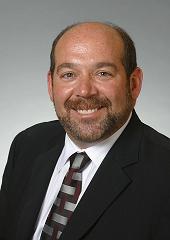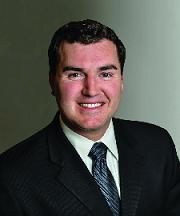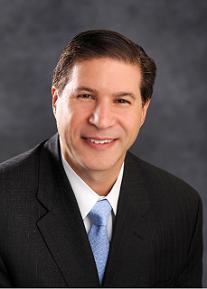Five spine surgeons share eight steps for adding a partner that will complement and add value to a spine group's practice.
1. Consider if you are ready for a new partner. Taking on a new partner is a significant commitment. Before deciding to begin the careful process of searching for and selecting a partner, evaluate your own practice and decide if a new partner will add significant value.
"You need to have a good infrastructure that can handle a new partner. This will attract some of the better people," says Michael Brisman, MD, FACS, CEO of Neurological Surgery, PC, in New York. Increased patient volume is another factor driving practices to seek an additional partner.
"At the point that patients are cancelling because of the wait time, it is time to consider adding a partner. New patients should only have to wait two to three weeks to get an appointment, no more than that," says Jesse Even, MD, fellowship-trained spine surgeon of Texas Comprehensive Spine Center at Arlington Orthopedic Associates in Texas.
 2. Decide what role a new partner will fill. Increased case volume is one of the largest reasons practices decide to add a new partner. An additional surgeon will be able to help shoulder a case load that is becoming too demanding for a practice. A partner can not only serve as a response to growth, but also as an opportunity to drive it. "The partner could provide more growth. The practice could consider adding a satellite office," says Brian Gill, MD, MBA, fellowship-trained spine surgeon of Nebraska Spine Center in Omaha.
2. Decide what role a new partner will fill. Increased case volume is one of the largest reasons practices decide to add a new partner. An additional surgeon will be able to help shoulder a case load that is becoming too demanding for a practice. A partner can not only serve as a response to growth, but also as an opportunity to drive it. "The partner could provide more growth. The practice could consider adding a satellite office," says Brian Gill, MD, MBA, fellowship-trained spine surgeon of Nebraska Spine Center in Omaha.
A partner can also add a new area of expertise. "If a practice has all lumbar spine surgeons, look for a cervical spine surgeon. Find someone that meets the needs of the group and the needs of the community," says Dr. Gill.
3. Begin an initial search. There are a number of places for practices to begin their search for a partner. Dr. Brisman suggests using a recruitment agency. Recruiting agencies can be hired on contingency; practices only pay the agency if it finds them a partner.
"The first thing you should do is place ads in professional journals," says Eric Wieser, MD, fellowship-trained spine surgeon of Texas Comprehensive Spine Center at Arlington Orthopedic Associates in Texas. The advertisement should have a practice's details, geographic location and specifications for what the practice is looking for in a candidate.

Many practices hire surgeons that have trained with them. Though this can eliminate a longer screening process, it limits the number of different perspectives in the practice. "It is a mistake to hire only people that have trained within the practice; a practice could become inbred. It is healthy to bring in people that have been trained elsewhere," Jack Zigler, MD, board-certified orthopedic spine surgeon of Texas Back Institute in Plano.
Reach out to residency and fellowship directors for candidate suggestions. "The spine world is pretty small. We know where the good fellowships are," says Dr. Wieser. Recommendations from peers within the field are a good place to start.
Conduct phone interview before inviting candidates for an in-person interview. Send out a search committee to conduct preliminary interviews with promising candidates, said Dr. Gill. Select a few individuals to come to the practice for a formal interview.
 4. Check any potential partner's references. Spine surgeons can look fantastic on paper, but this is not enough information with which to make a decision. Recommendation letters, while helpful, should not be the last stop for vetting a potential partner's references. "Talk to candidates' residency and fellowship directors. If they are coming from another practice, speak with their OR director," says Dr. Even.
4. Check any potential partner's references. Spine surgeons can look fantastic on paper, but this is not enough information with which to make a decision. Recommendation letters, while helpful, should not be the last stop for vetting a potential partner's references. "Talk to candidates' residency and fellowship directors. If they are coming from another practice, speak with their OR director," says Dr. Even.
It is important to actually speak to each applicant's references. "Everyone is worried about what they put down on paper. It is easier to read between the lines on phone," says Dr. Zigler.
5. Use in-person interviews to gauge a potential partner's character. A partnership in a spine practice is a very personal relationship. It is critical that partners can work well together in a way that benefits the practice as a whole. Spine practices should use in-person interview as a way to not only gain a picture of the surgeon's background and qualifications, but also to get a sense of the surgeon's personal traits. "The three 'A's of good partner are ability, affability and availability," says Dr. Zigler.
The in-person interview should be a screening tool. While the conversation will focus on an applicant's general background, their training and long term goals, this is a way to look for qualities that will make a good partner. "You want someone that is not afraid to admit that they made a mistake. On the flipside, you want someone that is proud of a decision. Try to get a glimpse into the human side of the person," says Dr. Zigler.
Ask open-ended questions. Allow the candidate to answer questions, either clinical or personal, that reveal their strengths and weaknesses. Practices want a partner that is professionally honest, as well as clinically capable.
If possible, introduce strong candidates to all of the existing partners of a practice. "The more people interacting in the recruitment process the better," says Dr. Gill. Everyone will be able to bring a different perspective to the table and help form a picture of how well a surgeon will fit with a practice.
 6. Spend time with a potential partner outside of the interview. A one-hour interview, or even a series of interviews, is rarely enough time to provide an accurate idea of an applicant's personality. "Spend time with them and their spouse before you hire them definitively. This helps avoid problems that could happen years later," says Dr. Wieser.
6. Spend time with a potential partner outside of the interview. A one-hour interview, or even a series of interviews, is rarely enough time to provide an accurate idea of an applicant's personality. "Spend time with them and their spouse before you hire them definitively. This helps avoid problems that could happen years later," says Dr. Wieser.
Time spent socially, rather than formally, will allow the surgeon to relax and behave more normally. This time can be used to get a better idea of a candidate's long term goals and whether or not he will be an asset to the practice. Time with the surgeon and his spouse, if there is spouse, will indicate whether or not they intend to remain in one place for very long. "Adding a partner is a large investment. It is never worthwhile taking someone on that is going to leave," says Dr. Brisman.
Getting acquainted with surgeons before beginning the process of adding them as partners allows those in a practice to gauge how well the person will handle the stress. "Look for someone well-rounded and active in other aspects of life. People that are too focused on work will burn out and become bad partners," says Dr. Even.
7. Select someone that fits with the culture of your practice. Each spine practice is different, not only because of varying specialties but because of varying personalities and perspectives. While it is healthy for partners to have different perspectives and approaches, a practice cannot survive constantly clashing partners. Consider everything from educational background to religious background. You can't choose someone that is the complete opposite of you, says Dr. Gill.
A partnership has to have an element of teamwork to be successful. Search for candidates that have shown the ability to work well with others. Consider someone that is a former athlete, says Dr. Wieser.
When practices include spine surgeons of different ages and different backgrounds, the approach to surgery is often split between aggressive and conservative techniques. "There is much more grey in spine surgery [than in other specialties]. In that grey band lies a practice's culture. Challenges are healthy. Tread the line between conservative and aggressive treatment," says Dr. Zigler.
Encourage potential partners to bring new ideas to the table and discuss different clinical approaches. The key is finding a partner that will bring fresh ideas and challenges, but not disrupt the ability of partners to work well together. "You want someone that is aggressive in patient care in technology, but conservative when it comes to patient cutting," says Dr. Wieser.

It is essential to remember that the culture of a practice has to be prepared to welcome a new partner. Structure in the beginning is very important. The practice should have a level of transparency. Potential partners should understand the pay structure and their responsibilities, says Dr. Brisman.
Both the partner and the practice have to be willing to build a working relationship. "One has to be prepared for some strong personalities," says Dr. Brisman.
8. Monitor the potential partner throughout the probationary period. Most spine practices have a trial period of a year to two years before officially naming a surgeon a partner. This time should be used to evaluate potential partners and their ability to be valuable asset to the practice. Conduct some form of evaluation at six or nine months. Let the potential partner know if they are on the right track or not.
Each existing partner should observe the potential partner and how he practices. Listen to what the practice's staff has to say. The time spent in surgery is one of the most important areas to monitor. "The stress of the OR will show their good side or their bad. They need to keep their cool regardless," says Dr. Even.
Regardless of how a spine practice chooses a partner, it is imperative to ensure that the selection is careful and rigorous. "You have worked very hard to build a reputation. You need to choose someone that is going to uphold that reputation," says Dr. Zigler.
More Articles on Spine:
3 Predictions for the Future of Minimally Invasive Spine Surgery
8 Emerging Business Issues in Spine Surgery
Dr. Fernando Techy: How Should Spine Surgeons Address Cervical Myelopathy?

